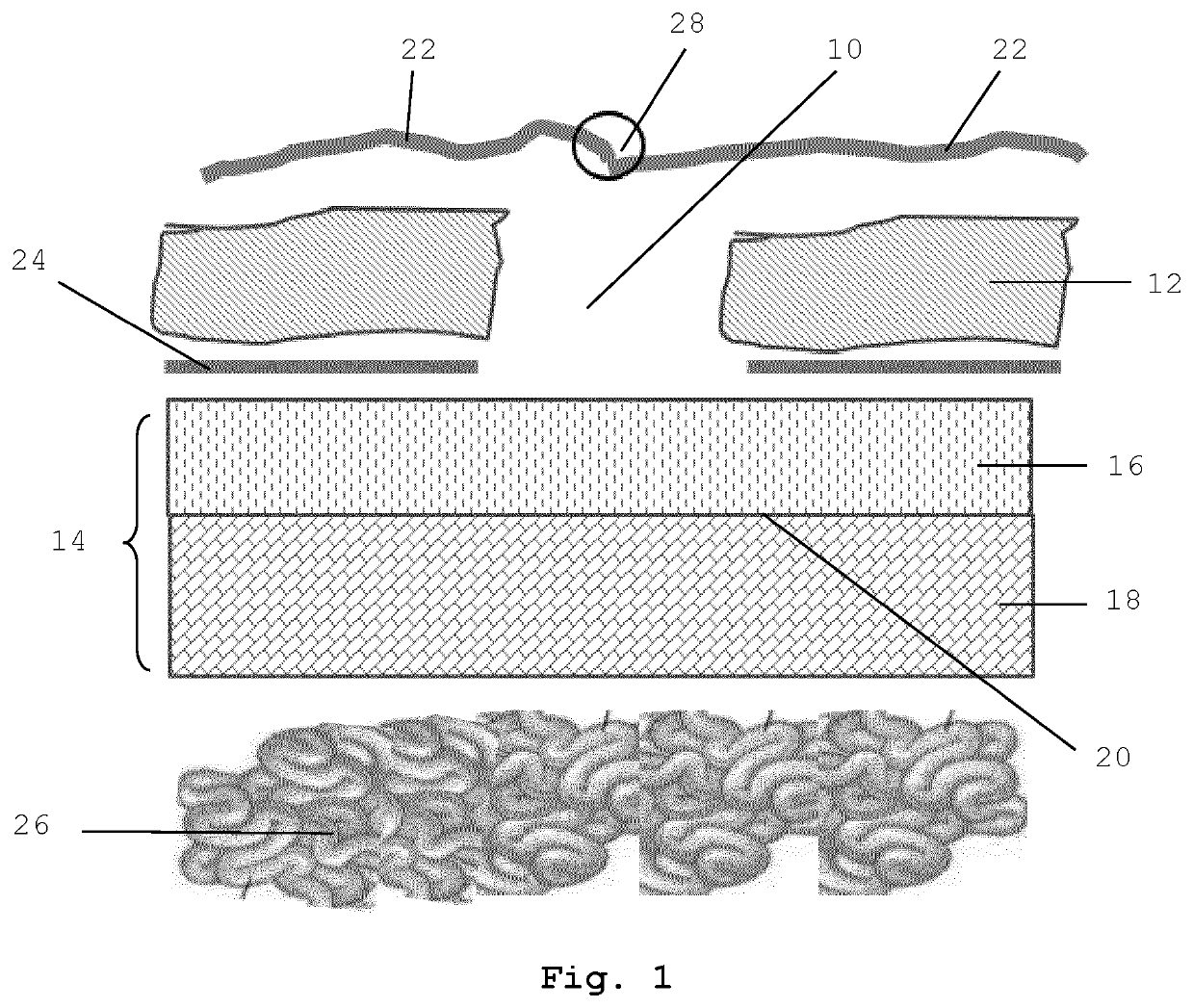Biodegradable Two-Layered Matrix for Preventing Post-Surgical Adhesions
a biodegradable, two-layer technology, applied in the field of biodegradable two-layer matrix for preventing post-surgical adhesions, can solve the problems of inability to dissect the peritoneum and small bowel loops, the formation of undesirable connection of originally separate tissues, and the death of these cells and structures, so as to reduce adhesion formation, facilitate and inexpensive manufacturing, and facilitate the closure of soft tissue defects. rapid and stable
- Summary
- Abstract
- Description
- Claims
- Application Information
AI Technical Summary
Benefits of technology
Problems solved by technology
Method used
Image
Examples
Embodiment Construction
[0018]The term “matrix”, as used throughout this application, refers to a three-dimensional support, e.g. a mesh or a scaffold, with a sponge-like structure, which is suitable for being colonized by cells. Specifically, the matrix of the present invention has a sponge-like structure with interconnected pores of different sizes. In this sense, the matrix serves as a three-dimensional template which can be colonized by cells or tissue. This colonization can take place in vitro or in vivo. Furthermore, the matrix serves, in connection with transplantations, for locating the transplant and also as a place holder for tissue which is gradually formed in vivo.
[0019]The expression “biodegradable” refers to a material which can be converted into metabolizable products in living organisms (or body fluids or cell cultures derived from living organisms). Biologically degradable materials include, for example, polymers which are bioresorbable and / or bioerodable. “Bioerodable” denotes the ability...
PUM
| Property | Measurement | Unit |
|---|---|---|
| Temperature | aaaaa | aaaaa |
| Fraction | aaaaa | aaaaa |
| Fraction | aaaaa | aaaaa |
Abstract
Description
Claims
Application Information
 Login to View More
Login to View More - R&D
- Intellectual Property
- Life Sciences
- Materials
- Tech Scout
- Unparalleled Data Quality
- Higher Quality Content
- 60% Fewer Hallucinations
Browse by: Latest US Patents, China's latest patents, Technical Efficacy Thesaurus, Application Domain, Technology Topic, Popular Technical Reports.
© 2025 PatSnap. All rights reserved.Legal|Privacy policy|Modern Slavery Act Transparency Statement|Sitemap|About US| Contact US: help@patsnap.com

